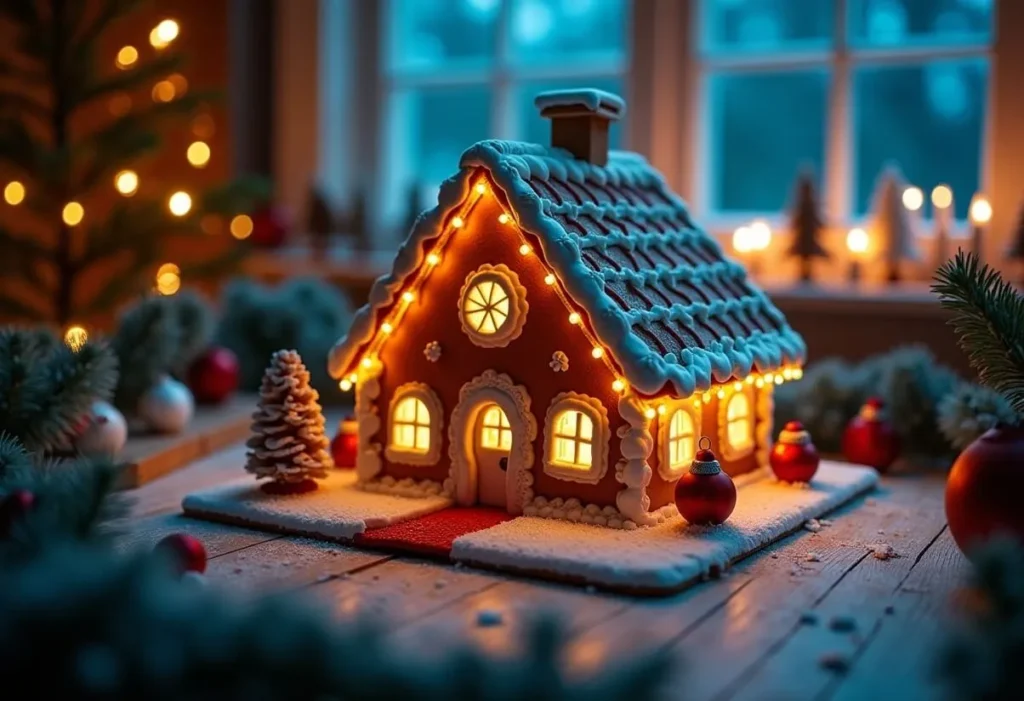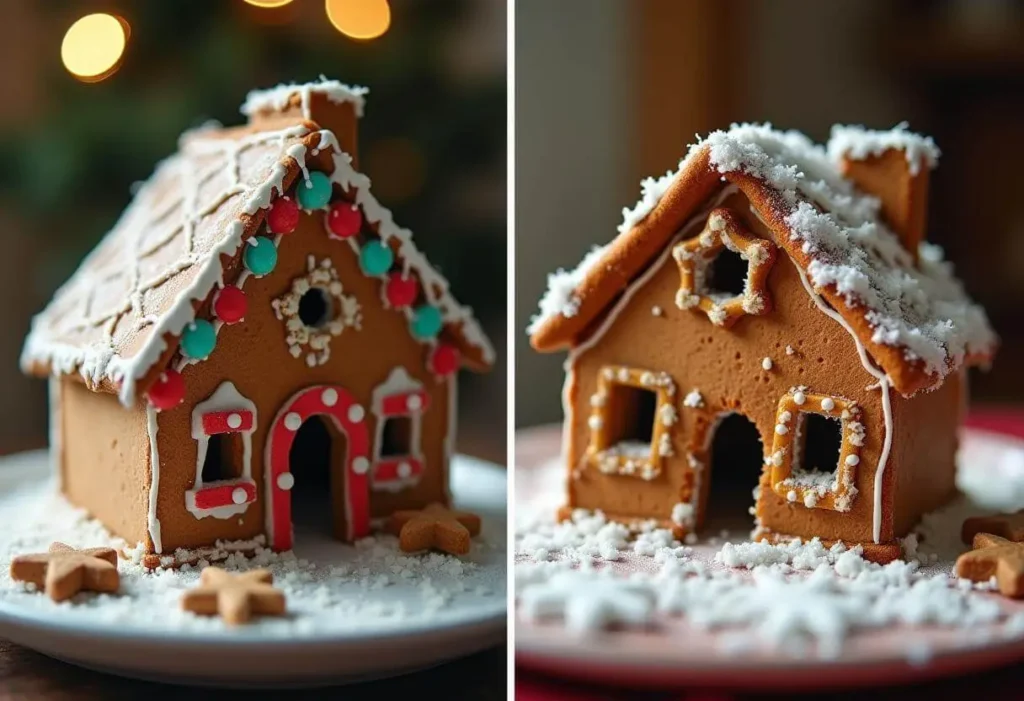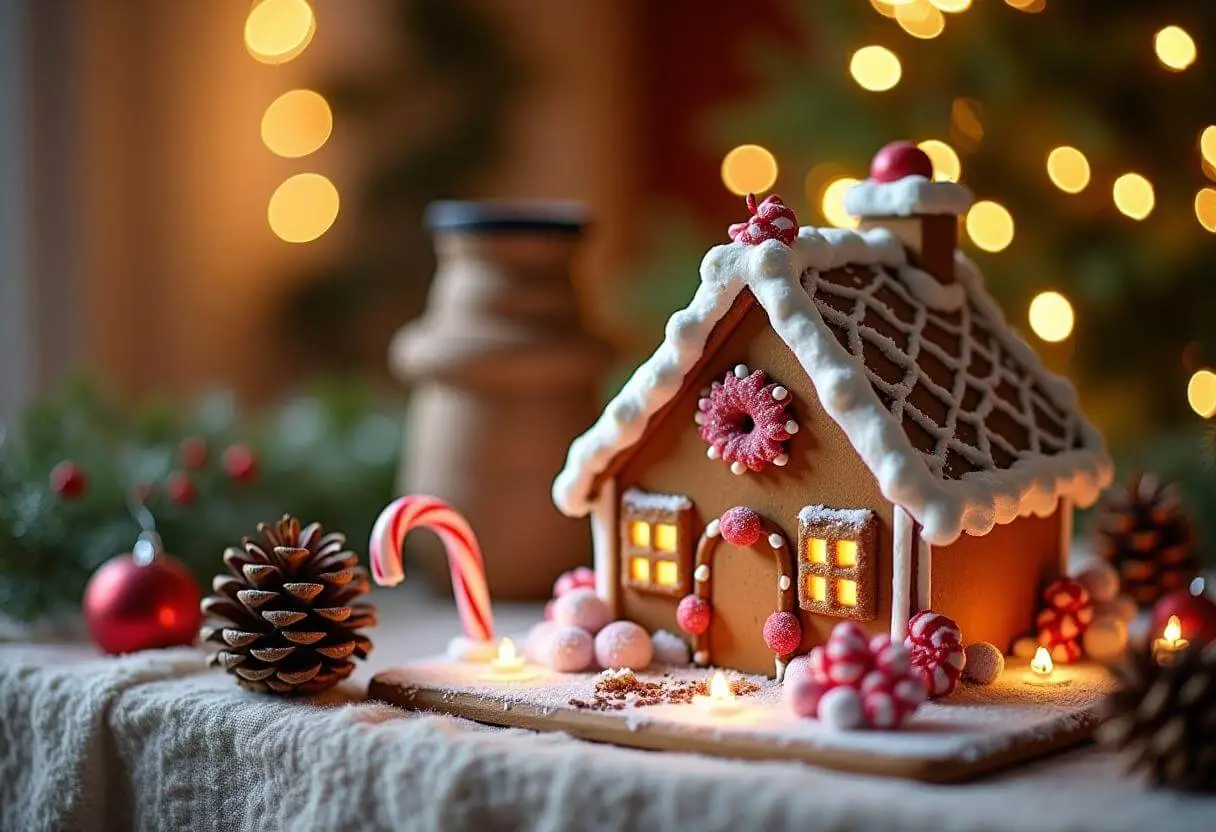Introduction
Gingerbread houses have become a quintessential part of holiday celebrations, bringing together creativity, craftsmanship, and sweet treats. From simple designs to elaborate architectural creations, they symbolize festive cheer for families worldwide. However, as delightful as they are to make and admire, one important question often arises: What is the expiration date on gingerbread houses? Knowing the shelf life of these creations is vital, whether you plan to eat them or use them purely for decoration.

The longevity of a gingerbread house depends on several factors, including the ingredients used, storage methods, and whether it’s intended for consumption or display. Edible houses are prone to becoming stale or even spoiling over time, while decorative ones can deteriorate due to environmental conditions. Proper storage, such as using airtight containers or protective coatings for decorative purposes, can significantly extend their lifespan.
In this article, we’ll dive into the specifics of how long gingerbread houses last, what factors influence their expiration, and actionable tips to preserve their beauty and freshness. With the right knowledge, you can make the most of your gingerbread creations this holiday season.
1. The Basics of Gingerbread Houses
1.1. What Are Gingerbread Houses Made Of?
Gingerbread houses are typically made using a combination of gingerbread dough, royal icing, and various types of candy for decoration. The dough itself is crafted from flour, sugar, molasses, and spices like ginger and cinnamon, which give it its signature flavor. Royal icing, made from powdered sugar and egg whites or meringue powder, acts as the “glue” holding the structure together. Common decorations include gumdrops, candy canes, sprinkles, and even edible glitter.
For detailed instructions on making your own gingerbread house, check out this recipe and guide.

Each of these components plays a role in the shelf life of a gingerbread house. The gingerbread dough, while sturdy, can become stale or soft over time, especially if exposed to air or moisture. Royal icing hardens as it dries, but it can crack or weaken if stored in humid conditions. Candy decorations, particularly soft ones like gummies, may degrade faster than harder candies. Altogether, these elements need proper care to ensure the house remains intact and appealing.
1.2. Why Does Shelf Life Matter?
The shelf life of a gingerbread house matters for both practical and safety reasons. Edible gingerbread houses are designed to be consumed, but their freshness diminishes over time. Stale gingerbread, cracked icing, and degraded candies not only reduce enjoyment but could also pose food safety concerns if left uneaten for too long.
For detailed tips on ensuring food safety for homemade treats, refer to this resource provided by the U.S. FDA.
Decorative gingerbread houses, on the other hand, are built for display rather than consumption. While they don’t have the same safety considerations, environmental factors like heat, humidity, and pests can still cause them to deteriorate. The quality and freshness of the ingredients used also influence how long a gingerbread house will last. Using fresh dough, properly cured icing, and long-lasting decorations can significantly extend its lifespan, whether it’s for eating or displaying.
2. How Long Do Gingerbread Houses Last?
2.1. Do Gingerbread Houses Expire?
Yes, gingerbread houses do expire, but the timeline depends on whether they are intended for consumption or decoration. Edible gingerbread houses typically have a shorter lifespan compared to those made purely for display. Over time, the ingredients can lose freshness, and environmental conditions may cause deterioration.

For edible gingerbread houses, expiration signs include staleness in the gingerbread, crumbling or cracking of royal icing, and a change in texture or appearance of candy decorations. Mold can develop if the house is exposed to excessive moisture. Decorative gingerbread houses, while not subject to spoilage, can degrade due to humidity, pests, or structural weakening.
In short, edible gingerbread houses are best consumed within a specific window, while decorative ones may last longer but require proper care to maintain their integrity.
2.2. How Long Does a Gingerbread House Last to Eat?
When made with fresh ingredients and stored correctly, an edible gingerbread house usually lasts about 1–2 weeks. However, the exact timeline may vary depending on the environment and how it’s stored. Exposure to air and moisture accelerates staleness, making the gingerbread lose its crispness and flavor.
To extend the edibility of a gingerbread house:
- Store in an airtight container: Protects against air and humidity.
- Keep in a cool, dry place: Avoids excessive heat, which can soften the icing and candies.
- Avoid refrigeration: While it may seem logical, refrigeration can introduce moisture, leading to a softer texture and potential mold growth.
By following these steps, you can keep your gingerbread house safe to eat for a longer period while maintaining its taste and appearance.
2.3. How Long Does a Decorative Gingerbread House Last?
Non-edible, decorative gingerbread houses can last several weeks to months if properly preserved. Since these creations are primarily for display, you can take measures to prolong their lifespan beyond that of edible ones.
Preservation methods include:
- Spray lacquer or varnish: Apply a food-safe spray to seal the gingerbread and icing, preventing exposure to air and humidity.
- Use non-perishable materials: Substitute real candies with decorative beads or faux decorations for extended durability.
- Protective storage: Place the gingerbread house in a display case or cover it with plastic wrap to shield it from dust, pests, and moisture.
Under ideal conditions, a well-preserved decorative gingerbread house can last for months or even years, serving as a charming centerpiece for multiple holiday seasons.
3. Factors Affecting Gingerbread House Shelf Life
3.1. Environmental Factors
The environment plays a significant role in how long a gingerbread house lasts, whether it’s edible or decorative. Temperature, humidity, and exposure to air are the primary culprits that accelerate spoilage or degradation.
- Temperature: High temperatures can soften the gingerbread and cause icing to melt, weakening the house’s structure. On the other hand, very cold temperatures can make the gingerbread brittle and more prone to cracking.
- Humidity: Moisture in the air can make gingerbread soggy and compromise the hard texture of royal icing. This is especially problematic for edible gingerbread houses, as humidity can also lead to mold growth.
- Exposure to Air: Uncovered gingerbread houses are susceptible to staleness as the gingerbread and icing dry out over time, resulting in a crumbly texture.
To combat these environmental factors, store gingerbread houses in a controlled environment with stable temperature and low humidity levels.
3.2. Storage Practices
Proper storage is crucial to extending the life of gingerbread houses, whether for eating or display.
- Edible Gingerbread Houses:
Store in an airtight container at room temperature to prevent exposure to air and humidity. Avoid placing them in direct sunlight, which can cause melting or discoloration of icing and candies. How long does gingerbread last in the fridge? Refrigeration is not typically recommended for gingerbread houses, as the moisture in the fridge can lead to a softer texture and reduced structural integrity. If necessary, refrigeration should only be used for short-term storage of edible houses, and they should be brought back to room temperature before serving. - Decorative Gingerbread Houses:
Non-edible houses can be stored in a protective case or covered with plastic wrap to shield them from dust, pests, and environmental damage. Using a display case keeps them intact for longer periods.
For tips on planning your gingerbread house timeline, visit our guide on when to start building your gingerbread house.
3.3. Ingredient Choices
The choice of ingredients also influences the shelf life of gingerbread houses.
- Preservatives: Adding food-grade preservatives to the gingerbread dough or royal icing can extend the lifespan of edible houses.
- Alternative Materials: Decorative houses can benefit from non-perishable materials, such as using salt dough instead of gingerbread or incorporating faux candies. These options not only increase durability but also make the house pest-resistant.
By selecting high-quality ingredients and incorporating preservatives or alternatives, you can build a gingerbread house that lasts longer without compromising its functionality or appearance.
4. Storing and Preserving Gingerbread Houses
4.1. Best Practices for Storing Edible Gingerbread Houses
Proper storage is key to ensuring edible gingerbread houses remain fresh and safe to eat. Without adequate protection, gingerbread can become stale, and icing or decorations can lose their appeal.
- Wrap in Plastic or Store in Airtight Containers: Wrapping the gingerbread house in plastic wrap or placing it in an airtight container helps shield it from air exposure, which can cause staleness. Airtight containers are particularly effective in maintaining the crispness of the gingerbread and the hardness of royal icing.
- Keep in a Cool, Dry Place: Moisture and heat are the two biggest threats to edible gingerbread houses. Storing them in a dry area away from direct sunlight and sources of heat prevents melting icing and softening dough. A pantry or cupboard is often an ideal location.
- Handle with Care: Edible gingerbread houses can be fragile. Avoid moving them unnecessarily, as the structural icing may weaken over time, especially if exposed to fluctuating temperatures.
By following these best practices, you can enjoy your edible gingerbread house for up to two weeks, preserving both its taste and its festive appearance.
4.2. Tips for Preserving Decorative Gingerbread Houses
Decorative gingerbread houses are designed to last much longer than their edible counterparts, often serving as charming centerpieces for weeks or even months. The right preservation methods can help maintain their structure and appearance.
Learn more about keeping gingerbread houses structurally sound for long-term display.

- Use Spray Lacquer or Varnish: Applying a food-safe lacquer or varnish to the gingerbread and icing seals the structure, protecting it from air and humidity. This method prevents cracking, softening, and general wear, especially for houses intended as seasonal decorations.
- Choose Durable Materials: If creating a gingerbread house purely for display, consider using a Gingerbread House Kit with sturdy, pre-packaged materials. Kits often include hard candies and pre-baked gingerbread panels designed for long-lasting use.
- Protective Storage: Once assembled, cover the house with plastic wrap or store it in a transparent display case. This protects the house from dust, pests, and accidental damage. For long-term use, placing it in a low-humidity environment can further extend its lifespan.
With these preservation techniques, your decorative gingerbread house can stay in pristine condition throughout the holiday season—and potentially beyond.
5. Frequently Asked Questions (FAQs)
Do Gingerbread Cookies Go Bad?
Yes, gingerbread cookies can go bad, though their shelf life is often longer than that of a gingerbread house. Typically, freshly baked gingerbread cookies last about 2–3 weeks if stored properly in an airtight container at room temperature. The smaller size of cookies makes them less prone to structural damage compared to large gingerbread houses, but they are still susceptible to staleness and moisture.
Signs that gingerbread cookies have gone bad include a dry, crumbly texture or an off-putting odor. For extended freshness, cookies can be frozen and thawed later for consumption. Unlike decorative houses, gingerbread cookies are always intended for eating, so proper storage is essential to maintaining their taste and texture.
How Long Does a Gingerbread Man Last?
The shelf life of a gingerbread man depends on factors like its size, ingredients, and storage method. Typically, they can remain fresh for weeks if stored properly. For a detailed explanation on maximizing freshness and proper storage, visit our full guide here.
What Is the Expiration Date on Gingerbread Houses in the USA?
The expiration date for gingerbread houses in the USA can vary widely based on their purpose (edible or decorative), storage conditions, and climate. Edible houses typically have a short shelf life, while decorative ones can last much longer under the right conditions.
For a detailed explanation, including timelines, storage tips, and factors that influence longevity, check out our full article on What Is the Expiration Date on Gingerbread Houses in the USA? Tips and Guidelines. This resource will provide all the information you need to preserve your gingerbread house effectively.
By following the tips and recommendations in the full guide, you’ll be able to enjoy your gingerbread creation for as long as possible, whether it’s for eating or as a festive display.
6. Conclusion
Gingerbread houses bring joy and creativity to the holiday season, but their longevity depends on how they are made and stored. Throughout this article, we’ve explored the key question: What is the expiration date on gingerbread houses? Edible gingerbread houses are best enjoyed within 1–2 weeks, while decorative versions can last months or even years with proper care.
Factors like environmental conditions, ingredient choices, and storage practices play a significant role in determining shelf life. Storing edible gingerbread houses in airtight containers and keeping them in cool, dry places can help maintain their freshness. For decorative houses, using protective coatings and display cases can preserve their charm for longer periods.
By taking the right steps, you can extend the life of your gingerbread house and make the most of its festive appeal. Whether you plan to eat your gingerbread creation or keep it as a holiday decoration, proper care ensures it stays fresh and visually appealing.
Now that you know how to preserve your gingerbread house, gather your materials and start building! Enjoy the process and cherish the memories made along the way, knowing you’ve maximized the life of your sweet masterpiece.

